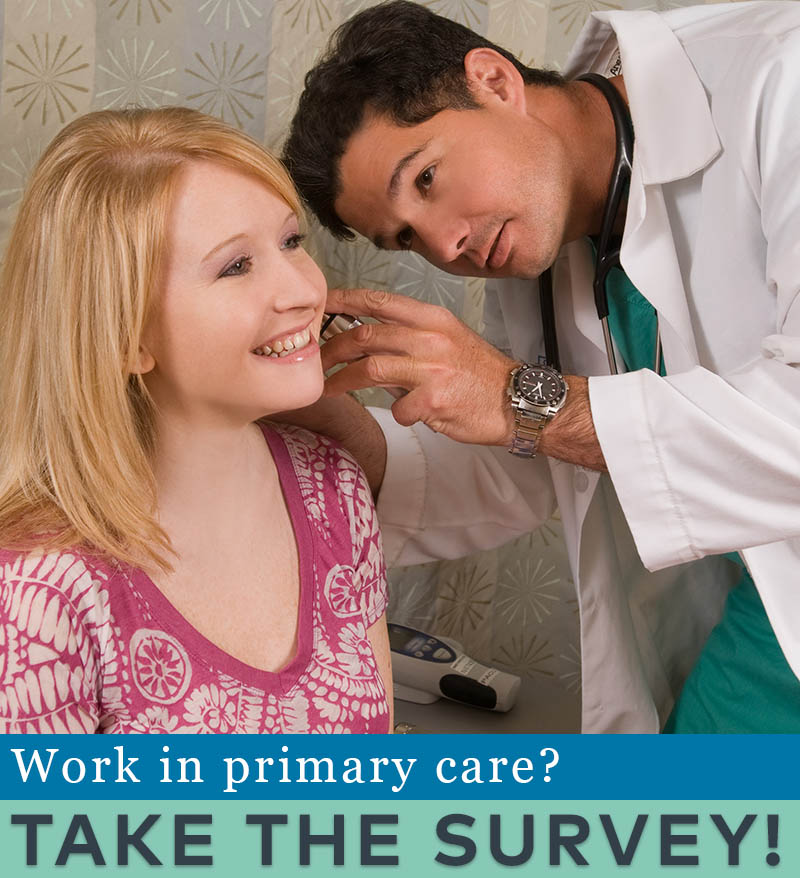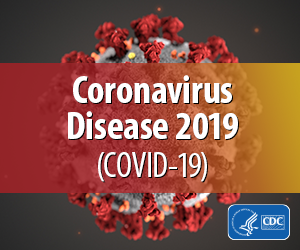You are looking at an archived version of our site. Please visit thepcc.org for a fresh, new experience!
You are here: Array » Primary Care & COV ...
Primary Care & COVID-19: Week 18 Survey
Check back weekly for the latest survey results and updates.
For data from the previous survey, see Week 17 Results.
Who replied to the survey in Week 18?
The Primary Care Collaborative is partnering with the Larry A. Green Center to regularly survey primary care clinicians and patients to better understand the impact of COVID-19 in real time.
523 primary care clinicians from 47 states responded to the survey fielded between August 7 and 10, 2020. The states with the most responses are Texas (21.9%), Washington (18.7%), Virginia (8.9%) and Oregon (7.4%). The range of specialties is: family medicine, 73%; internal medicine, 15%; pediatrics, 5%; geriatrics, 3%; other, 4%. About 1 in 3 (33%) owns their practice, 4 in 10 (40%) practices are owned by a hospital or health system, 13% are independent and part of a larger group, and 5% are government-owned. 37% report a practice size of 10 or more clinicians, 34% report a practice size of 1-3 clinicians, and 29% report a practice size of 4-9 clinicians. 8% report practicing in a primary care and convenience care setting, 23% in a rural setting, 27.6% in a patient-centered primary care home, 15% in a community health center, and 9% in an office, school or college.
Results at a glance
Both patients and clinicians are experiencing the consequences of a protracted pandemic.
A very high number of clinicians (84%) report that their patients are carrying a heavier-than-usual mental health burden. More than 6 in 10 clinicians (63%) report a noticeable increase in the stress in their practice during the past four weeks because of the COVID-19 surges. More than half of clinicians (53%) report that in the past four weeks, clinicians or staff members of their practice have been out due to illness or self-quarantine. A large majority (72%) place the level of strain on their practice in the last four weeks from COVID-19-related changes and pressures at a level of 3 or 4 (out of 5, indicating a severe impact).
Most clinicians are working the same or fewer hours than before the pandemic but many are receiving less pay.
About 1 in 5 (22%) is working fewer hours and with less pay. About the same number (21%) has had no change in hours or pay. But almost 1 in 5 (45%) is working about the same or more hours but with decreased pay.
As far as how they are spending their time, 4 in 10 clinicians say they are spending a majority of their time (more than 60%) performing in-person visits with patients. Half (49.2%) say they are spending little (1-15%) of their time doing video visits with patients. 6 in 10 say they are spending little (1-15%) of their time doing phone visits with patients. This is consistent with the previous clinician survey (conducted July 24-27 - two weeks prior) that showed that fewer than 17% were relying heavily on virtual visits (i.e., many were spending little time doing virtual visits). However, in that previous survey a higher percentage - 58% - said they were conducting the majority of their visits in-person.
Learn more: Download the Series 18 Clinician Survey Executive Summary (includes select open-ended answers to survey questions)
Voices from the Primary Care Front Lines
Some additional general text comments from respondents:
Primary care is defined by fighting against the health impacts of the callousness of the American capitalist system. (California)
[The pandemic has] taken an already fragile/over-stressed primary care situation and pushed it over the edge. (Michigan)
Completely sucks. Would leave today if I didn't feel obligated to see my patients through it. (Texas)
I am experiencing burnout for the first time in my 32-year career. The hours are longer, the patients are more medically complex and suffering from more psychiatric maladies… I am providing more mental health than I am trained to do - and the mental health providers in my community are doing their best. (Michigan)
What has enabled the care of your patients?
Funding of telehealth, received shipment of PPE via local medical society, patient encouragement and support. (California)
Received critical loans, funding of telehealth, team camaraderie. (Iowa)
Community needs us to deliver excellent primary care. That is why we are here. They need us now more than ever. (Wisconsin)
My patients' expressions of concern about my personal health and stress level as I continue to provide care has been unexpected, very touching, and has helped sustain me over the past month. (Michigan)
What has hindered the care of your patients?
Elimination of overtime while workforce reduced due to COVID exposure and childcare issues. (Alabama)
Lack of PPE. It has even been hard to find gloves! I cannot get my staff N95 masks. Trying to convince patients to wear masks and wear correctly is also an issue… I am just trying to keep patients and staff safe and it seems as hard as pulling teeth! (Illinois)
The visits are complex, chronic care patients and excessive number of mental health visits - long, long visits. (Oregon)
Compassion fatigue, physical and emotional fatigue, cynicism, anger at "non-maskers" and politicians and political groups who are pushing us back and back and back … I can't take it much longer. (Rhode Island)
Exhaustion. Demoralized by anti-science elected officials and racism. (New Mexico)
| Allegato | Dimensione |
|---|---|
| 764.87 KB |

Are you a physician, nurse practitioner, or PA working in primary care?
Help PCC and the Larry A. Green Center track how your practice is responding to the COVID-19 outbreak by completing the Green Center's occasional survey.
The regular surveys are no longer being conducted.
COVID-19 Updates
Maggio 9, 2022 | Primary Care Collaborative
Aprile 19, 2022 | Primary Care Collaborative
Aprile 19, 2022 | Primary Care Collaborative
Marzo 7, 2022 | STAT
Febbraio 27, 2022
- 1 di 39
- seguente ›

Recent News
Agosto 16, 2024
Agosto 12, 2024
Luglio 16, 2024
Giugno 24, 2024
May webinar highlights: “The Commercial Market: Alternative Payment Models for Primary Care” Nate Murray explains w… https://t.co/KX9Wi2w6oY —
2 anni 5 mesi fa
@CMSinnovates’ primary care strategy is rooted in a 2021 @theNASEM’s report which called #primarycare “foundational… https://t.co/glbPxvCysg —
2 anni 5 mesi fa
@CMSinnovates has a new #primarycare strategy, envisioning “ACO-based primary care model tests that may focus on pr… https://t.co/aJGF1z411l —
2 anni 5 mesi fa
- Page 1
- ››
Menu secondario
Copyright © 2024 Primary Care Collaborative




